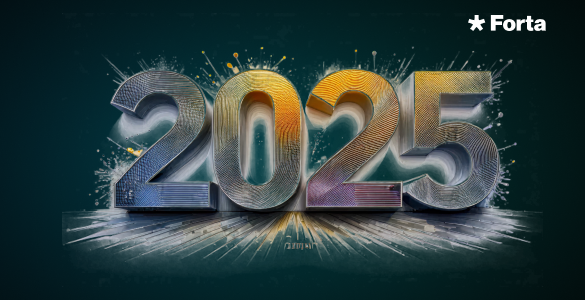Share
Recaps
Forta’s 2022 Retrospective
December 29, 2022
•


2022 has been an unpredictable ride for everyone, but Web3’s fragility to attacks hasn’t changed. Billions of dollars were hacked once again, and the need to improve security standards remains urgent. Forta, the leading real-time detection network for security and operational monitoring, proved that it can be a critical part of making crypto safer by consistently detecting hacks and alerting its users. From amazing improvements in the network’s threat-intelligence, to the outstanding growth (in quality and quantity) of the Forta community, the past year was full of exciting developments and highlights.
Over the last year, the Forta Network detected numerous hacks before they happened. Forta’s detection bots have become remarkably successful in detecting malicious smart contracts through ML model based static analysis and dynamic analysis via simulations. In addition, the Attack Detector, fed by 80+ underlying bots, is constantly looking for and flagging attacks that are about to happen, or have just happened, by looking for common patterns based on past exploits.

Machine learning becomes a key component of Forta’s detection toolkit. Since blockchain data is publicly available, machine learning has an ocean of training data to analyze transactions and detect patterns. As detailed in a past blog post, a recently deployed detection bot was able to alert on multiple hacks worth $20+ million before they happened. This model was trained on a dataset of past malicious and benign smart contracts, and constantly scans all new smart contract deployments to predict which are malicious.
The Forta Network is actively used by top projects in the space, and currently monitors over $30B in TVL, on the Ethereum, Polygon, Arbitrum, Optimism, BSC, Avalanche and Fantom networks. Forta now protects over 50% of DeFi’s TVL by monitoring protocols like Maker, Lido, Aave, Polygon, Compound, dYdX, Liquity and Balancer, among others, constituting a critical part of the Web3 security stack.

Over the course of 2022, real-time monitoring received more attention as a critical component of a comprehensive approach to smart contract security. Leading audit firms like OpenZeppelin, ChainSecurity and MixBytes also began including security monitoring recommendations in their written audit reports.

Over half a million wallet users are now protected through Forta’s integration with ZenGo. This integration focused on preventing phishing attacks, warning ZenGo users about interactions with suspicious contracts and allowing for user intervention. In 2023, the Forta Foundation will be working with other major wallet providers to bring Forta safeguards to more end users.
This year also saw the launch of the Forta App, which allows anyone to receive alerts on their wallets or smart contracts from a range of detection bots. The app offers a simple flow for users to subscribe their addresses to bots relevant to wallets and smart contracts, including Forta’s cutting edge Attack Detector.
With the launch of the FORT token, community governance kicked off within the Forta Network in June. The FORT airdrop distributed tokens to early Forta community members and Web3 builders. The Forta Governance Forum featured many discussions, of which four became official proposals.
900+ detection bots were deployed to the Forta Network in 2022. These bots were developed by DeFi protocols, NFT projects, independent security researchers, smart contract auditors, Web3 security companies, and centralized crypto exchanges.
4,300+ scan nodes powered the Forta Network in 2022, staking more than 10 million FORT. Scan node operators earned more than 10 million FORT in rewards for meeting certain performance thresholds.
Applied research efforts at OSU and UCSB expand the frontier of threat detection by leveraging Forta. Talented teams at Ohio State University and University of California Santa Barbara are working on some of the toughest real-time threat detection problems with Forta. $100K+ has been distributed to researchers working on these problems and Forta’s RFP is offering another $100K grant for academic researchers looking to contribute to the Network.
Looking to the future, the space must fundamentally change in order to create a world where users and protocols can operate with minimal risk. Web3 is in need of threat prevention solutions that prevent, mitigate, and reactively respond to attacks. Many considerations need to be made when designing these solutions including that of transparency and the consequences of said solutions to users. To ensure that future, in addition to building the leading decentralized and permissionless threat detection network, Forta is pushing the frontiers of machine learning, zero trust systems, and other cutting edge research. Through the passion of individuals, protocols, and projects that comprise the Forta community, that secure decentralized future is finally within reach.

